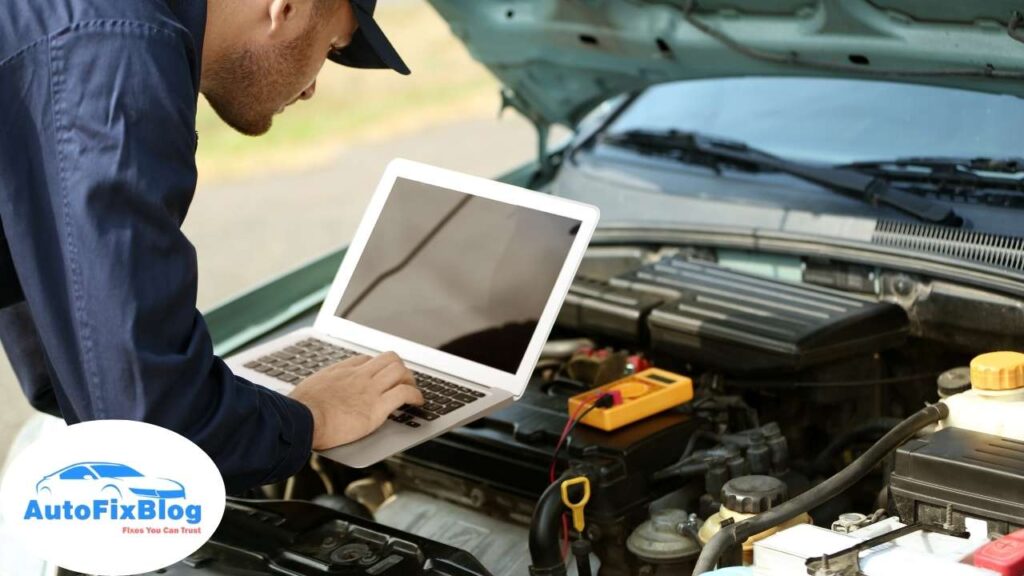Reprogramming a car refers to adjusting or modifying the software of its onboard computer system, also known as the Electronic Control Unit (ECU). The ECU governs a variety of essential systems, including the engine, transmission, and other critical functions.
Reprogramming the ECU can enhance performance, fix errors, improve fuel efficiency, or update the car to suit specific needs. This article provides a detailed guide on how to reprogram a car safely and effectively.
Why Reprogram a Car?
Reprogramming a car’s ECU can serve various purposes, including:
- Performance Upgrades: Adjusting settings for more horsepower, better torque, or increased speed limits.
- Fuel Efficiency: Optimizing fuel consumption for cost-effective and environmentally friendly driving.
- Error Correction: Addressing issues like check engine light warnings or faulty sensor readings.
- Compatibility: Updating the ECU to integrate new hardware or aftermarket modifications.
Understanding the purpose of reprogramming will help you choose the right approach and tools for the task.
Tools and Materials Needed
To successfully reprogram a car, you’ll need the following:
- OBD-II Scanner or Diagnostic Tool: A device that connects to the car’s OBD-II port to access the ECU.
- ECU Reprogramming Software: Specialized software, often provided by car manufacturers or aftermarket developers.
- Laptop or PC: A computer to run the reprogramming software.
- Stable Internet Connection: Required for downloading updates or new software versions.
- Car Battery Charger: Ensures the battery doesn’t drain during the process.

Step-by-Step Guide to Reprogram a Car
1. Understand Your Vehicle’s Requirements
Before starting the process, research your car’s make, model, and year to determine the specific requirements for ECU reprogramming. Different vehicles may use proprietary software or have unique procedures.
- Tip: Check the owner’s manual or consult the car manufacturer’s website for detailed instructions.
2. Prepare the Vehicle
Ensure your car is ready for reprogramming:
- Park the car in a well-ventilated, level area.
- Disconnect any unnecessary electronic devices to reduce power drain.
- Connect a battery charger to prevent interruptions caused by a low battery.
3. Connect the Diagnostic Tool
The OBD-II port is usually located beneath the dashboard on the driver’s side.
- Plug the OBD-II scanner into the port securely.
- Turn the ignition key to the “ON” position without starting the engine.
4. Launch the Reprogramming Software
- Install and launch the ECU reprogramming software on your computer.
- Follow the software prompts to connect to the car’s ECU via the OBD-II scanner.
Tip: Some software might require a subscription or license to access advanced features.
5. Back Up the Existing ECU Data
Before making any changes, back up the original settings.
- Use the reprogramming software to create a complete copy of the ECU’s current data.
- Save the backup file securely on your computer.
- This step is crucial in case you need to restore the original settings later.
6. Choose the Desired Configuration
Depending on your goal, you can either:
- Update the ECU Software: Download and install the latest manufacturer-provided software to fix bugs or add new features.
- Modify Settings: Adjust parameters like fuel injection, ignition timing, or speed limits for performance tuning.
- Install Aftermarket Programs: Load custom software designed for specific performance enhancements or features.
7. Perform the Reprogramming
- Follow the software instructions to upload the new configuration to the ECU.
- Ensure the process completes without interruptions.
- Avoid turning off the ignition or disconnecting the scanner until the software confirms success.
8. Test the Vehicle
Once reprogramming is complete:
- Turn off the ignition and disconnect the OBD-II scanner.
- Start the engine and check for any warning lights or unusual behavior.
- Test drive the car to ensure the desired changes are working correctly.
Common Challenges and Troubleshooting
Reprogramming a car can sometimes be tricky. Here are common challenges and how to address them:
- Software Compatibility Issues: Ensure the reprogramming software matches your car’s make and model. Using incompatible software may cause errors or even damage the ECU.
- Interrupted Power Supply: If the battery dies during reprogramming, the ECU may become corrupted. Always use a battery charger to avoid this issue.
- Error Codes After Reprogramming: If warning lights appear, use the diagnostic tool to read and resolve error codes.
- Unsuccessful Reprogramming: Restore the original ECU backup file and retry the process with updated software or tools.
Safety Precautions
- Do Not Rush: Carefully read all instructions and proceed methodically.
- Avoid Unauthorized Changes: Making unsupported modifications can void warranties or cause mechanical issues.
- Seek Professional Help: If you’re unsure about any step, consult a certified mechanic or ECU specialist.
When to Seek Professional Assistance
While many enthusiasts can handle basic ECU reprogramming, some situations require professional expertise:
- Advanced performance tuning, such as turbocharger or supercharger integration.
- Diagnosing complex issues like misfires or inconsistent fuel injection.
- Reprogramming newer cars with encrypted ECUs, which may require dealership tools.
Professional mechanics or tuning shops often have specialized tools and experience to ensure a safe and effective reprogramming process.
Benefits of ECU Reprogramming
Reprogramming your car’s ECU offers several advantages:
- Enhanced Performance: Improved acceleration, smoother gear shifts, and higher top speeds.
- Better Fuel Economy: Optimized fuel injection can reduce fuel consumption.
- Increased Resale Value: Cars with customized or updated ECUs may attract performance enthusiasts.
Reprogramming a car can significantly enhance its functionality, performance, and efficiency when done correctly. By following the steps outlined above and using the right tools, you can safely reprogram your vehicle to meet your needs. Always prioritize safety, back up your ECU data, and consult professionals for complex tasks. With proper care and attention, your car will perform better than ever!



